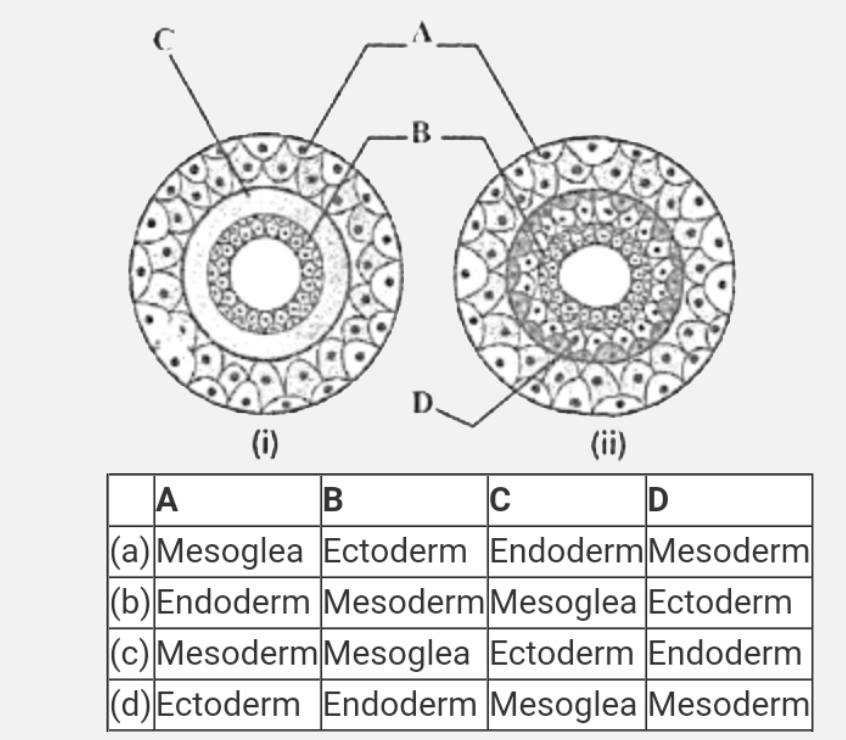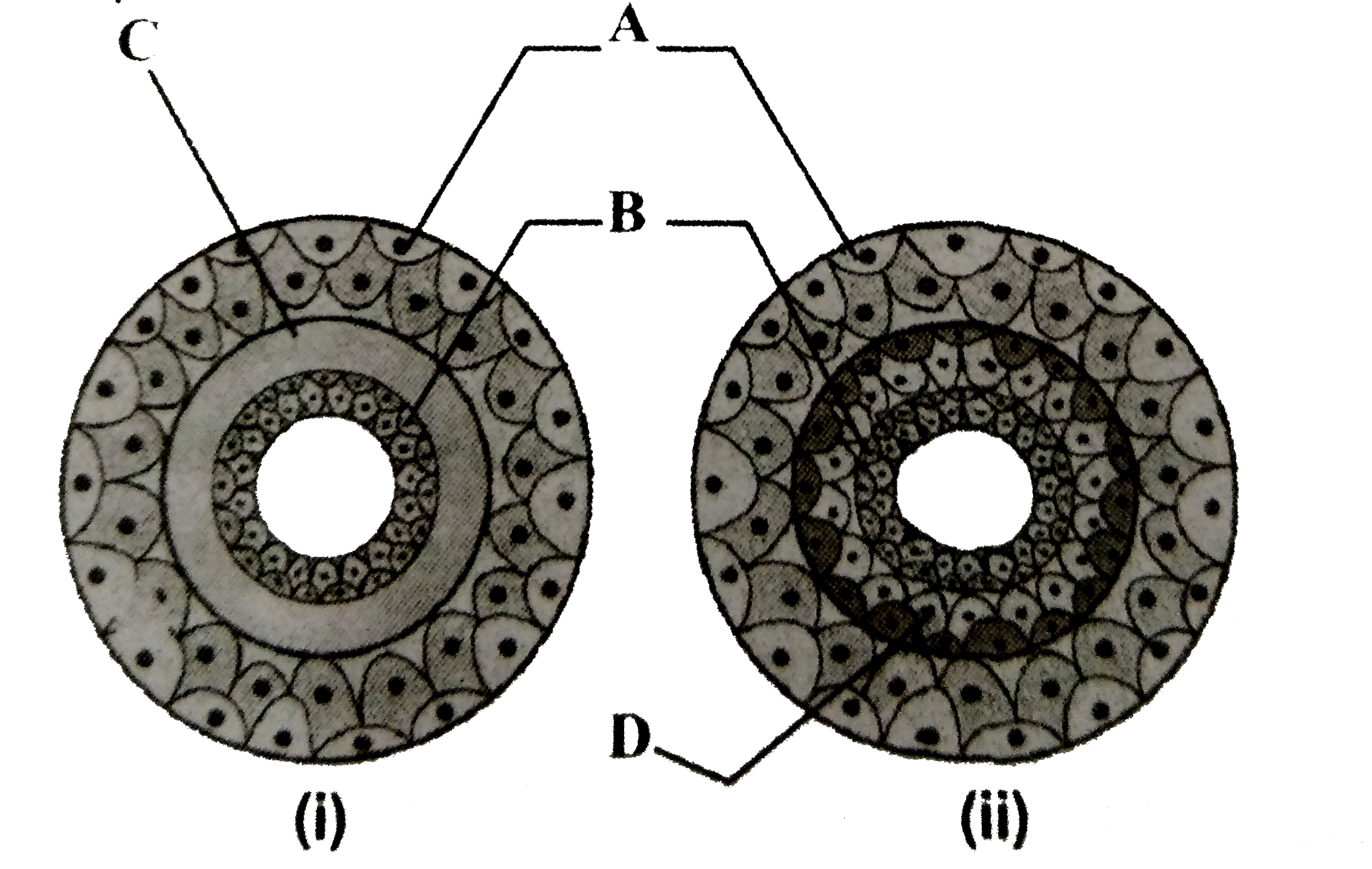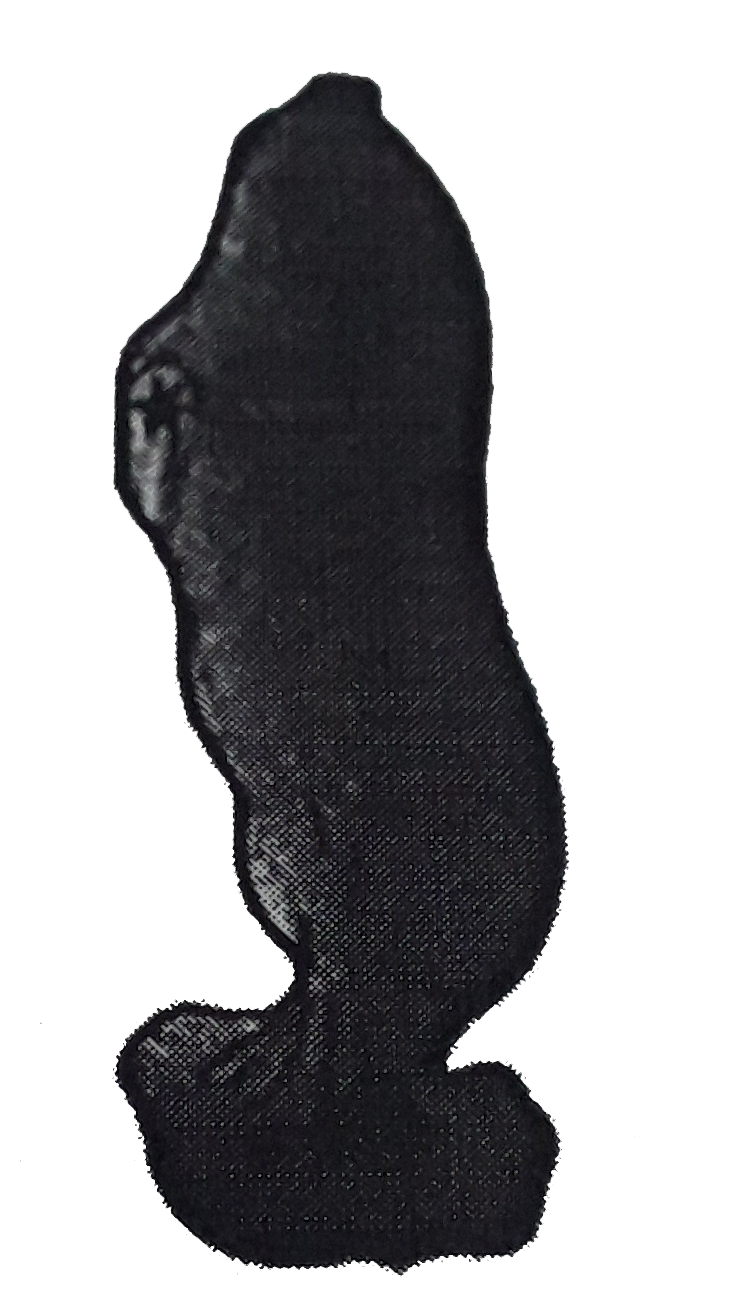Diploblastic and triploblastic are terms that describe
the number of invaginations during embroyonic development
the number of germinal layers during embryonic development
the number of germinal layers during embryonic development
the number of cell types during development.
The correct Answer is:C
Step-by-Step Solution:
1. Understanding the Terms:
- The terms "diploblastic" and "triploblastic" refer to the number of germ layers present during the embryonic development of an organism.
2. Embryonic Development:
- During embryonic development, organisms form germ layers which are the foundational layers that develop into various tissues and organs.
3. Germ Layers:
- There are three primary germ layers:
- Ectoderm: The outermost layer, which develops into the skin and nervous system.
- Mesoderm: The middle layer, which forms muscles, bones, and the circulatory system.
- Endoderm: The innermost layer, which develops into the digestive system and other internal organs.
4. Diploblastic Organisms:
- Diploblastic organisms are those that develop only two germ layers: ectoderm and endoderm. They do not have a mesoderm layer.
- Example: Organisms in the phylum Porifera (e.g., sponges) are considered diploblastic.
5. Triploblastic Organisms:
- Triploblastic organisms develop all three germ layers: ectoderm, mesoderm, and endoderm.
- Example: Organisms in the phylum Platyhelminthes (e.g., flatworms) are considered triploblastic.
6. Conclusion:
- Therefore, the terms diploblastic and triploblastic describe the number of germinal layers during embryonic development. The correct answer is that these terms refer to the number of germinal layers during the development.
- The terms "diploblastic" and "triploblastic" refer to the number of germ layers present during the embryonic development of an organism.
- During embryonic development, organisms form germ layers which are the foundational layers that develop into various tissues and organs.
- There are three primary germ layers:
- Ectoderm: The outermost layer, which develops into the skin and nervous system.
- Mesoderm: The middle layer, which forms muscles, bones, and the circulatory system.
- Endoderm: The innermost layer, which develops into the digestive system and other internal organs.
- Diploblastic organisms are those that develop only two germ layers: ectoderm and endoderm. They do not have a mesoderm layer.
- Example: Organisms in the phylum Porifera (e.g., sponges) are considered diploblastic.
- Triploblastic organisms develop all three germ layers: ectoderm, mesoderm, and endoderm.
- Example: Organisms in the phylum Platyhelminthes (e.g., flatworms) are considered triploblastic.
- Therefore, the terms diploblastic and triploblastic describe the number of germinal layers during embryonic development. The correct answer is that these terms refer to the number of germinal layers during the development.
Topper's Solved these Questions
- ANIMAL KINGDOMBOOK - NCERT FINGERTPS ENGLISHCHAPTER - ANIMAL KINGDOMEXERCISE - Classification of non-chordates
41 Videos
- ANIMAL KINGDOMBOOK - NCERT FINGERTPS ENGLISHCHAPTER - ANIMAL KINGDOMEXERCISE - Classification of chordates
62 Videos
- ANATOMY OF FLOWERING PLANTSBOOK - NCERT FINGERTPS ENGLISHCHAPTER - ANATOMY OF FLOWERING PLANTSEXERCISE - Anatomy Of Flowering Plants
143 Videos
- BIOLOGICAL CLASSIFICATIONBOOK - NCERT FINGERTPS ENGLISHCHAPTER - BIOLOGICAL CLASSIFICATIONEXERCISE - Biological Classification
132 Videos
Similar Questions
Knowledge Check
Given below are three statements regarding Aschelminthes.
(i) They are bilaterally symmetrical and triploblastic.
(ii) They are dioecious.
(iii) All are plant or animal parasites.
Select the option that has both the correct statemets.A(i) and (iii)B(i) and (iii)C(ii) and (iii)DNone of these
Intermediate between diploblastic and triploblastic body structure is found in
View SolutionIdentify the labelled parts A to D in sections of (i) diploblastic and (ii) triploblastic organisations in animals.

View SolutionExamine the figures of diploblastic (i) and triploblastic (ii) organisation in animals given below and identify the labelled parts A to D.

View SolutionDifferentiate between Diploblastic and triploblastic animals
View SolutionTriploblastic animal differ from diploblastic animal by having
View SolutionSelect the correct options for given animals
(i) Diploblastic/Triploblastic
(ii) Acoelomate/Pseudocoelomate/Eucoelomate
(iii) Chordate/Non chordatae
(iv) Vertebrate/Invertebrate
(v) Urochordate/Cephalochordate

View SolutionDescribe HMM.
View Solution
